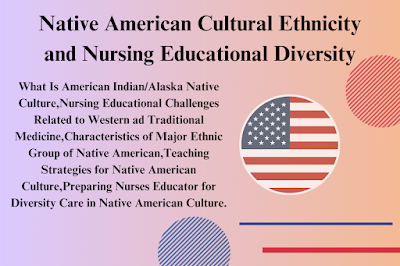The Native American Cultural Ethnicity and Nursing Educational Diversity. Stories and legends serve to teach positive behavior while also drawing attention to the consequences of ignoring the laws of nature. Herbs, manual therapies, ceremonies, and prayers are used in various combinations to prevent and treat illness.
The Native American Cultural Ethnicity and Nursing Educational Diversity
Cultural Ethnicity and Nursing Educational Diversity According to the U.S. Census Bureau (2010), over 5.2 million people in the U.S., or approximately 1.7% of the population, identify as American Indian or Alaska Native (AI/AN). This population comprises more than 500 distinct tribes, including groups such as the Cherokee, Navaho, Sioux, Chippewa, and Pueblo. These tribes primarily reside in the northwestern, central, and southwestern regions of the United States. The term Native American is commonly used to encompass both American Indians and Alaska Natives.
Roughly half of this population is eligible for healthcare services through the Indian Health Service (IHS), a division of the U.S. Public Health Service, which is responsible for providing health services to these communities .
Nursing Educational Challenges Related to Western and Traditional Medicine
A significant challenge for nurses is integrating Western medicine with the traditional healing practices of Native American tribes. This requires an understanding of the cultural beliefs of Native Americans, including their theories on the causes and treatments of illnesses. Nurses must move beyond a strictly biomedical orientation and adopt an ethno-medical perspective that acknowledges the tribe’s understanding of health and illness .
For Native Americans, health is closely tied to their relationship with the universe. However, specific beliefs can differ between tribes. Traditional medicine often involves spiritual practices and ceremonies, such as those performed by medicine men (shamans), and incorporates herbal remedies and rituals that are integral to the Native American healing process .
Characteristics of the Native American Ethnic Group
The Purnell Model for Cultural Competence highlights several common characteristics of Native American culture:
- Spiritual attachment to the land and harmony with nature.
- A close relationship between religion and medicine.
- Strong extended family ties, with the tribe as an essential support system.
- A view that children are an asset and central to the community.
- The belief in supernatural powers within both animate and inanimate objects.
- A desire to maintain cultural identity and resist acculturation.
- A general lack of materialism, time consciousness, and emphasis on sharing .
These characteristics set Native Americans apart from mainstream American culture and underscore the importance of understanding their cultural framework in healthcare.
Native American health practices emphasize the integration of spiritual and physical care, with illnesses often believed to result from supernatural forces. As a result, ceremonies led by spiritual leaders or family members may be performed as part of the healing process . Additionally, family involvement is crucial, with large groups of family members often gathering to support an ailing relative .
Teaching Strategies for Native American Culture
To effectively deliver health education to Native Americans, nurses must consider their unique cultural perspectives. A key aspect is to provide space and privacy for spiritual ceremonies, such as those led by a medicine man or involving other traditional rituals .
The Indian Health Service (IHS), established in 1955, plays a central role in delivering healthcare to Native American populations. Despite improvements in diabetes control and life expectancy, significant health disparities remain . Nurses must focus on providing culturally sensitive education about chronic conditions like heart disease, diabetes, and substance abuse, and work to integrate traditional healing with modern medicine .
Preparing Nurses Educators for Diversity Care in Native American Culture
Nursing education must evolve to better address the cultural diversity of the American population, particularly in caring for Native Americans. The Healthy People 2020 initiative highlights the need to eliminate racial and ethnic health disparities, and the nursing profession has embraced this goal .
To provide effective, culturally competent care, nurses must understand the cultural, social, and spiritual needs of their patients. This involves recruiting more minority nurses, strengthening multicultural perspectives in nursing curricula, and ensuring that nurses are prepared to create environments that encourage open communication with patients from diverse backgrounds .
Cultural humility, a concept that emphasizes understanding and respecting diverse cultural perspectives, is crucial for nurses to practice effective, patient-centered care .
Read More:
https://nurseseducator.com/didactic-and-dialectic-teaching-rationale-for-team-based-learning/
https://nurseseducator.com/high-fidelity-simulation-use-in-nursing-education/
First NCLEX Exam Center In Pakistan From Lahore (Mall of Lahore) to the Global Nursing
Categories of Journals: W, X, Y and Z Category Journal In Nursing Education
AI in Healthcare Content Creation: A Double-Edged Sword and Scary
Social Links:
https://www.facebook.com/nurseseducator/
https://www.instagram.com/nurseseducator/
